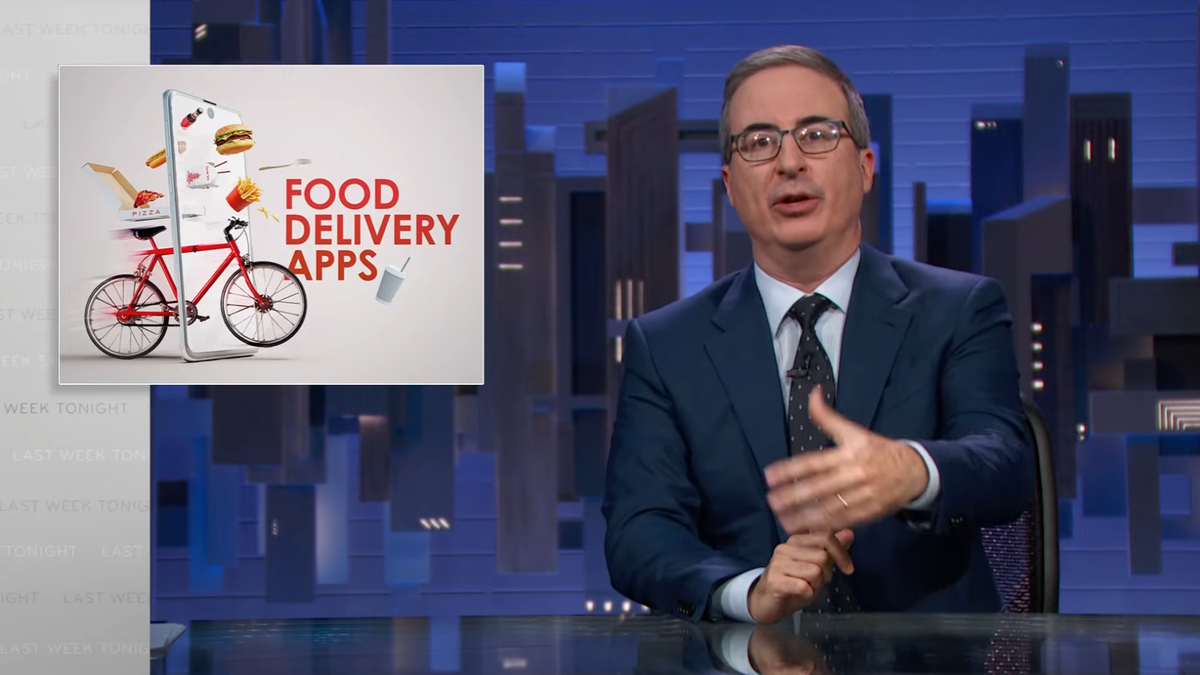Doordash, Grubhub, Uber Eats, and a dozen others are abject failures of the Silicon Valley venture capital-funded wasteland of “gig economy” apps. These apps make it easier to get cold and disappointing food delivered right to your house at ridiculous expense. The companies themselves are having a hard time figuring out a profitability model, despite leeching almost all of the profit from notoriously unprofitable local restaurants, and paying the delivery people practically nothing. This isn’t really working out for anyone.
This week’s episode of Last Week Tonight saw John Oliver spend 26 minutes discussing every single way in which food delivery apps have become a nightmare today.
It varies from app to app, but most of them seem to charge a base fee of around $5 for the delivery, giving $2 to the delivery person. Given that gas is over $3 per gallon, you have to hope that the customer tips well, or isn’t very far from the restaurant they’re ordering from. Some delivery drivers are getting stiffed on tips, occasionally caused by a user interface fuckup in the app itself. If the food is disappointing, users rating their service as poor can inadvertently affect a delivery person’s score and their ability to continue working. Is there any part of this that is actually good?
Perhaps the restaurants suffer most, as the Washington Post pointed out some apps take about half of the money you pay for food. This leads to restaurants jacking up the prices on app orders to compensate for the lost profits. Some restaurants have even noted that they were added to the app against their will, and have been listed as offering foods they don’t sell. So the restaurant is also getting screwed by these apps.
Oliver mentions that the winner here is the customer, as they’re getting cheap delivery subsidized by venture capital. I’m not sure that’s entirely true, however, as prices continue to rise now that traditional delivery drivers are all but extinct. This used to be a simple process in which you’d call from a land line and a person would bring you pizza for a couple bucks tip. Now that it’s an app, massive VC-backed companies have inserted themselves between you and the pizza person, and the costs are already on the up.
I spent much of college working as a delivery person for an just-off-campus Chinese food restaurant. I wasn’t officially an employee and I got paid two dollars per hour under the table. I guess I was sort of a contract driver, as I had to buy the food from the restaurant and track down the money from the people on the other end of the transaction. On a good Friday or Saturday I would bring home around $500. During the week it would sometimes be as little as 80 bucks. And I had to cover all of my own expenses, but I drove a shitty little hatchback and gas was cheap.
Was my experience as a delivery driver worse than what is expected from an app-based delivery person today? I think it was bad in a different way, but at least I wasn’t being taken advantage of by a massive corporation. I was just mugged twice for my lo mein money.

